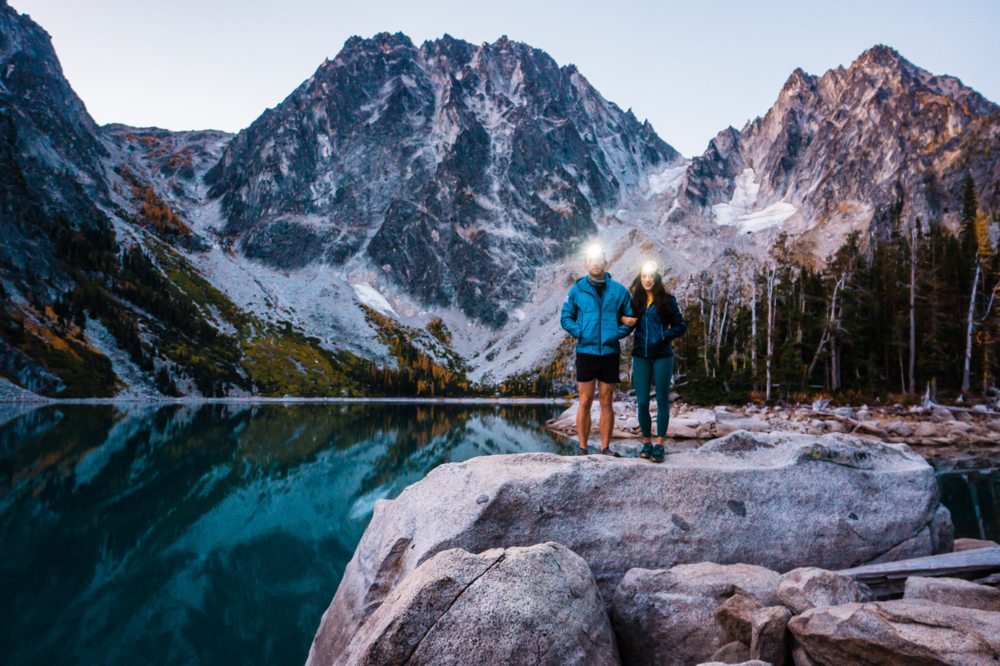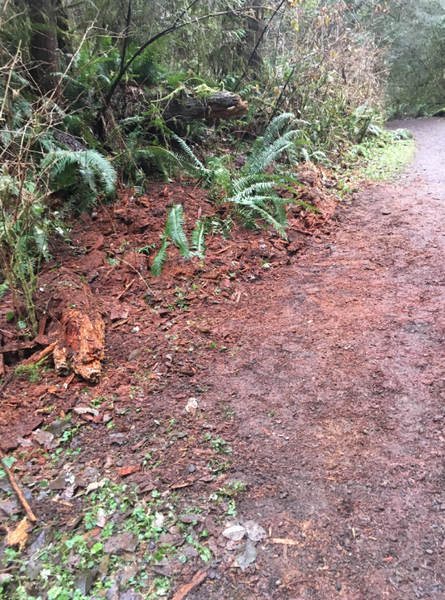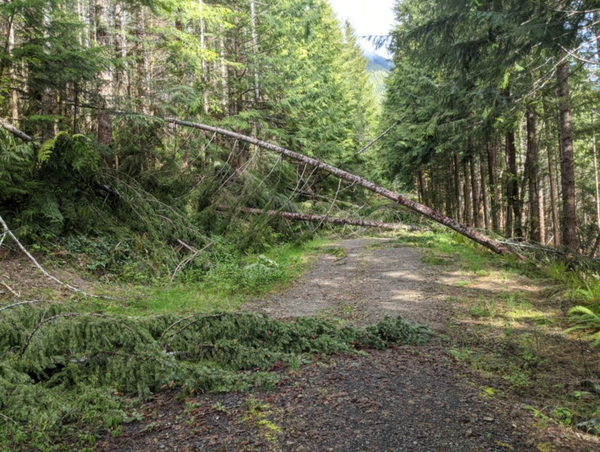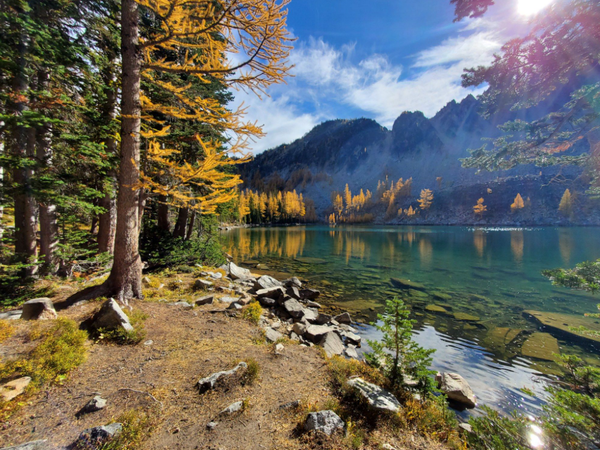
Our eNewsletter Routefinder, sent on the first of each month to over 30,000 individuals (including our 15,000 members), is one of our most important communications. Considered a “mini magazine,” each month we sift through dozens of blogs, events, and updates to select eight to ten of the most important items for you to read. This includes heartfelt magazine stories, key organizational updates, conservation and advocacy alerts, new courses, and more. And do you know what is often the most popular item, month after month?
Trip reports.
That’s right – what some would consider to be dry, technical reading is actually top-tier content for our membership. Post holing on Mt. Si? Crowded trailheads by 9am at Colchuck Lake? Yet another batch of blowdowns in the Pasayten? The people want to know.
Trip reports are foundational to our members’ and leaders’ ability to get outside. Trail conditions, weather, new obstacles, route information, and more contribute to the feasibility and the success of any potential outing we plan. More than that, trip reports give us a taste of what’s to come. Whether you want to find the best spot to pick alpine blueberries and admire mountain goats, or you just need to know if you should bring your microspikes up McClellan Butte this week, trip reports answer the questions that we would otherwise have to ask our friends or hunt down on our own. And as a member of The Mountaineers, you now have the informational power of 15,000 friends.
For this reason we have decided to offer you top tips to create successful trip reports, and a stellar autumn backpacking trip report for you to read. Break out your waterproof notebooks, folks, because this is what The Mountaineers is all about.
The best trip reports include
Detailed trip information. The foundation of any good trip report is going to be high-quality information on the route and how your group completed it. This is what most readers come for, as it allows them to plan their own trip to maximize preparation and minimize time-drains or safety risks. Especially on highly technical trips like climbs, the more information, the better. If you’re creating a trip report, do your best to include the following:
- Trail conditions, including snow conditions (when applicable)
- Route obstacles (blowdowns, water crossings, loose rock, etc.)
- Route-finding tips, and any route-finding issues your group ran into
- Weather conditions throughout your trip
- Start and end times (include break durations)
- Water sources
- Potential campsites/natural shelters
- Any safety concerns
Group dynamics. In addition to learning about the trail itself, trip reports are an opportunity for people to learn more about what works and what doesn’t. The size of your group, their experience level, and any strategic or safety decisions you made could be valuable information for another leader or participant. For instance, if your group did not summit, why did you make that decision and what factors influenced your final outcome? These details can sometimes be just as important as the trail conditions. Other group information can also inform readers on how they want to approach their trip. For instance, including group experience and fitness levels, paired with total trip time, will help readers estimate how long their own trip may take.
High-quality photos. Although it’s helpful to have a written description of a route and any issues your party encountered, photos can quickly clarify route confusion, show trail conditions, and get folks excited about the trip. Always be sure to take photos that are clear, not backlit (facing the sun) or overexposed, and offer a full shot of the trail or obstacles you faced. Well-taken photos are much more useful to future route users, and make your trip report more appealing overall.
 This image is washed out, only shows a small portion of the trail, and does not include any relevant information about the route.
This image is washed out, only shows a small portion of the trail, and does not include any relevant information about the route.
 This image is clear, shows the trail straight-on, and provides information on trail obstacles.
This image is clear, shows the trail straight-on, and provides information on trail obstacles.
Bonus info. Half of the fun of reading a trip report is getting stoked for your upcoming excursion. If you’re putting together a trip report, always include the bonuses: wildlife sightings, top-notch views, beautifully-done stewardship work, berry picking, and stellar sunrises. At the end of the day, it’s the journey, not the summit, that we remember most. Revel in it, and others will be inspired to do the same.
Example trip report
This is a staff favorite example of a highly-detailed trip report, offering the perfect balance between technical information and outdoor stoke. Read on to learn about Golden Lakes Loop, and consider taking your own backpacking trip this season
Golden Lakes Loop, October 4-7, 2021
By Cheryl Talbert, 13-year member & backpacking leader
 Photo by Cheryl Talbert.
Photo by Cheryl Talbert.
Our group of four Mountaineers friends started at the Crater Creek trailhead (TH) with a plan to do four days around the Golden Lakes loop, including nights on the ridge near N Navarre Peak and at Sunrise Lake. The roads to the TH were very good, only a few bumpy sections, and the parking area at the TH is very large with a toilet. When we arrived at around 11AM on a Monday there were already a dozen vehicles in the lot.
The trail to Upper Eagle was dusty at the bottom but well graded (with lots of trail engineering for mountain bikes and motorbikes) and signage is good. Golden larch and aspen appeared part way up, and by the time we got to the lake the larch color was all around us and stunning! Needles are falling fast now though I project that the color will last another week, windstorms notwithstanding. We arrived first at Upper Eagle and took lovely camps by the lake; probably another 8-10 people arrived after us and there was room for everyone to disperse out of sight and hearing. There is a box toilet at this camp and the lake is gorgeous, highly recommended! We arrived there in about three hours.
On day two we set out up toward Horsehead Pass, a good trail with a few boulder-hopping sections. Great views on the way up, looking across Lower Eagle Lake to the eastern plains. From the pass the views to the west along the Chelan summit ridge are really beautiful, a mix of golden larch, dark evergreens, yellow aspen, red berry bushes, and broad golden meadows. We descended to Boiling Lake, then took the route signed 'Cub Lake,' which then requires keeping an eye on the map and taking the turn on the Summit Trail going east. Many people get confused and take the spur straight along the shore of Boiling Lake - don't do that, as that trail goes up to a ridge and stops. The Summit Trail is flat for a while through forest, then climbs and turns east through broad meadows with views. We passed by the turnoff to the Angel's Staircase (well signed) because we wanted to explore the ridges along the Summer Blossom Trail to North Navarre Peak and camp along there. It was well worth the walk along the summit trail - more lovely meadow and fall vegetation - but then there was a steep (but well graded) larch- lined climb to Horsethief Pass (much damaged by bikes). At the top of the pass we could see that the ridges above Horsethief Basin on both sides had burned out and weren't so pretty to look at, though there were still larch and spruce in the basin (you could probably find places to camp below but we didn't look). We saw a bear below as we followed the Summer Blossom Trail - narrow but pretty easy to follow with lots of ups and downs. Finally, there was a steep descent and then a climb to the ridge with N Navarre Peak ahead, where a friend had suggested a ridgetop camp. However the weather forecast was for cold wind and the ridge was burned out, plus the creek before the ridge was down to just a trickle. We decided to go back and camp under a patch of spruce in the gorgeous larch meadows on the other side of Horsethief Pass, and this was a good call – low clouds and mist/rain blew in later and we were glad for shelter under the trees.
The next morning dawned VERY cold - mid 20s. Our water filters froze sitting for a short time next to our cooking area! We bundled up in all of our clothes, treated water with aquamira drops, and set out to go up Angel's Staircase. The trail through here is just fantastic, a gentle climb to the ridgetop with dramatic views though everything was quite frosty (about an inch of heavy frost near the top covering all the rocks, though not slippery). From the top of Angel's Staircase we descended through Merchant's Basin and set out to climb up to Sunrise Lake to camp (note that most maps, including Gaia, show a turnoff well before the clump of evergreens where the Sunrise Lake trail sign is posted - but the trail is very faint and I've missed it twice! Not to worry, you can cut toward the creek and will find the trail). We got to Sunrise Lake to find a VERY cold wind blowing even at 11am, and insufficient shelter from the wind, so anticipating having to hide in our tents the whole day and night we decided instead to enjoy a chilly lunch at the lake and then go back down to Merchants Basin, where there are lots of really nice sheltered camps and protection from the wind (a very good decision, as we heard the wind roaring through the trees up in the direction of the lake through that night!). We explored along Foggy Dew creek and I read for a while in the sun before an early dinner and into our tents.
On day four we woke to another very cold morning, bundled up and headed back up the trail through the basin, over the crest and down the trail to Cooney Lake (this section is steep with poor traction in places). Cooney is beautiful with a lot of camps, but was deserted on this Thursday morning. Larch color on this side is well on the decline and the ground drifted with golden needles. We made quick work of the six miles from Cooney back out to Crater Creek TH.
Lead image of Garrett Arnold and Skye Stoury. Photo by Skye Stoury.
This article originally appeared in our fall 2022 issue of Mountaineer magazine. To view the original article in magazine form and read more stories from our publication, visit our magazine archive.
 Hailey Oppelt
Hailey Oppelt